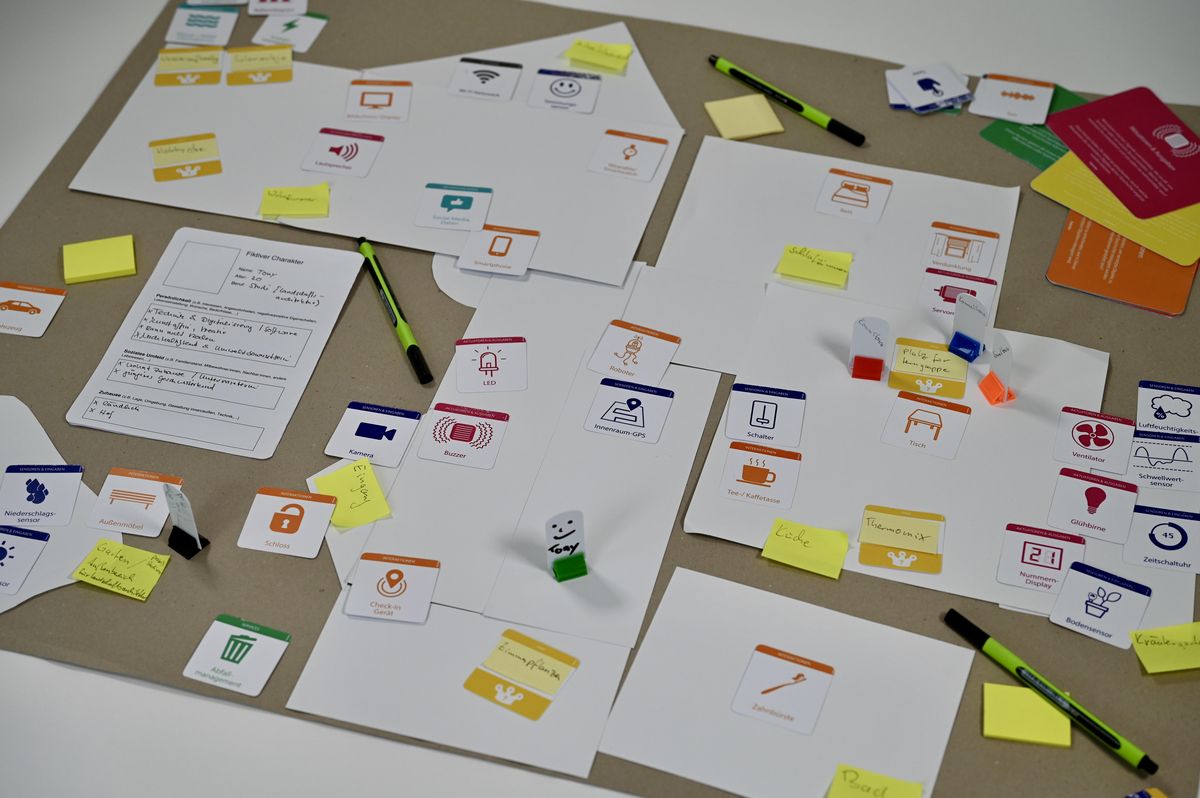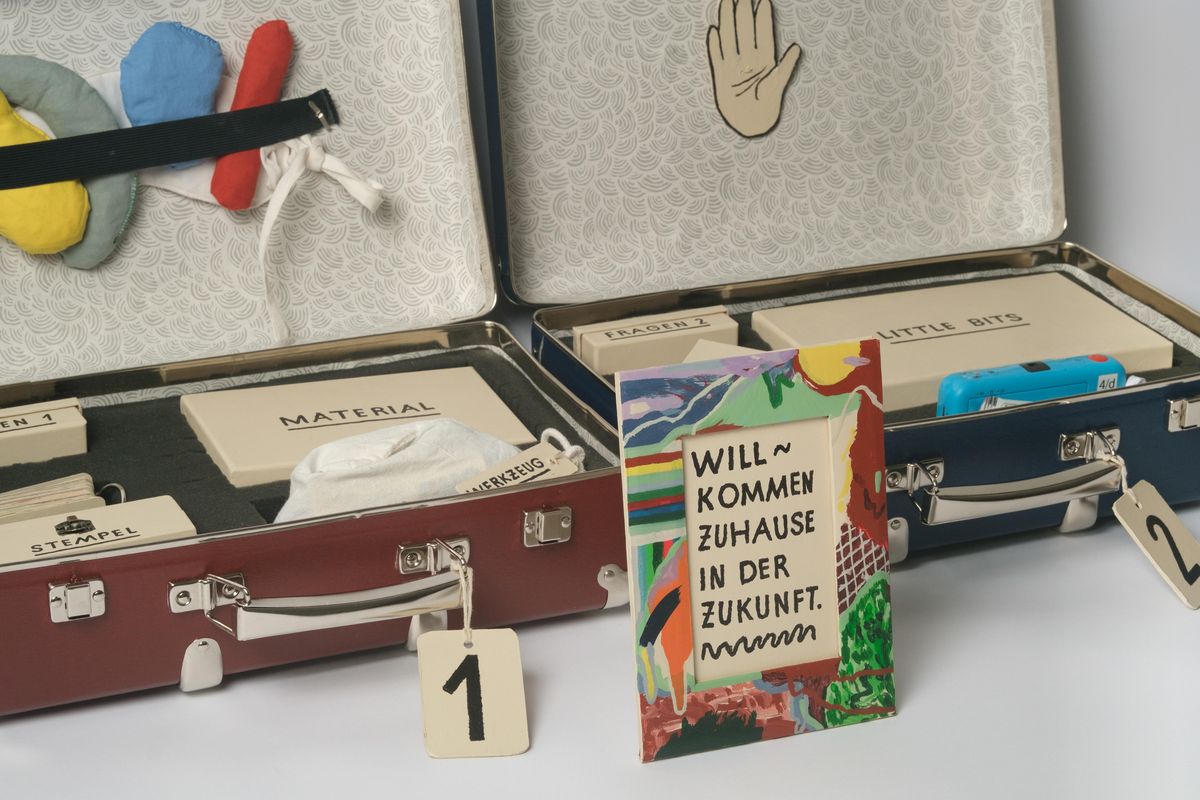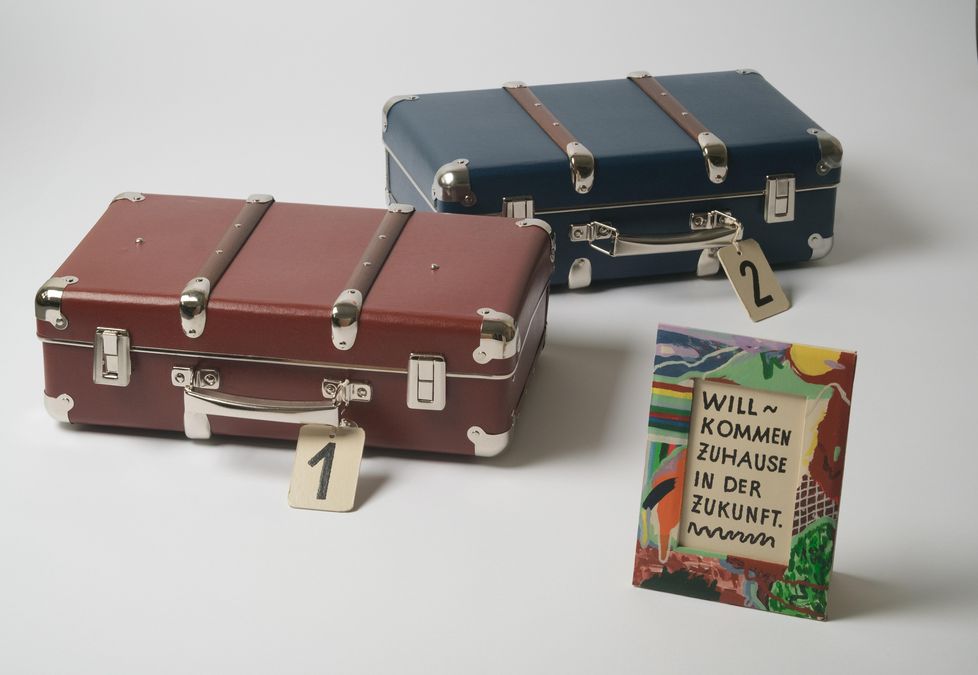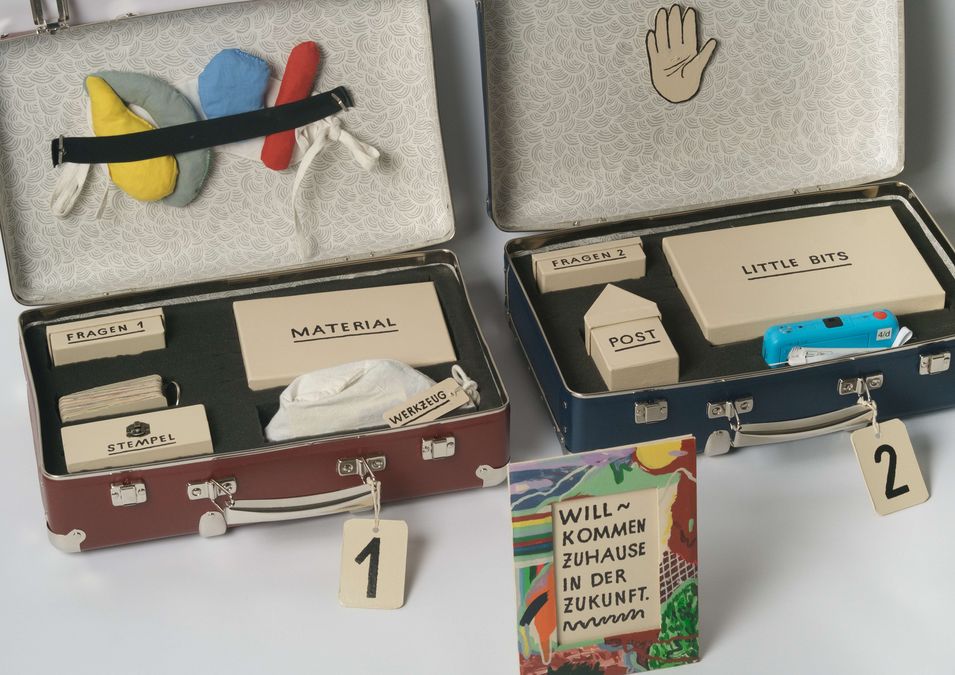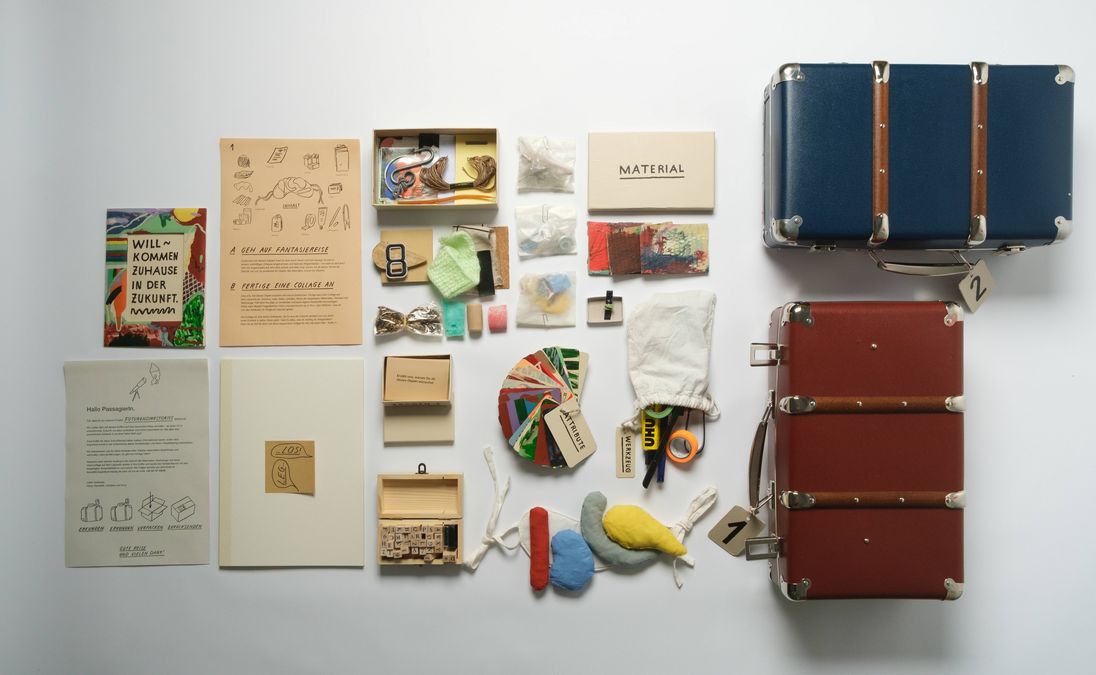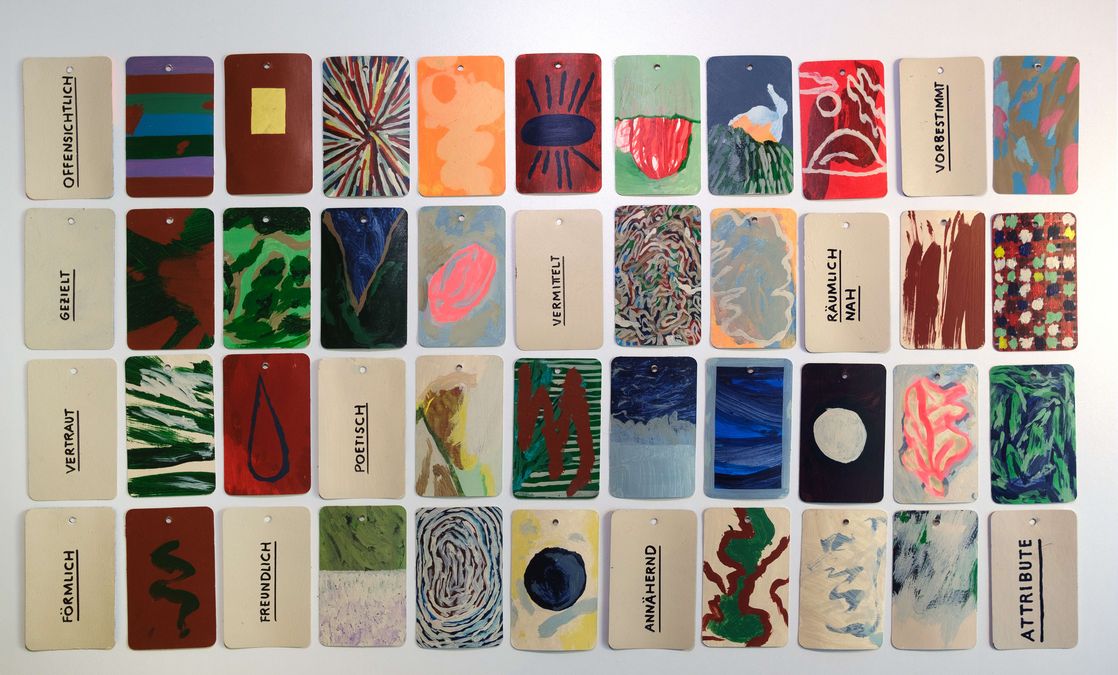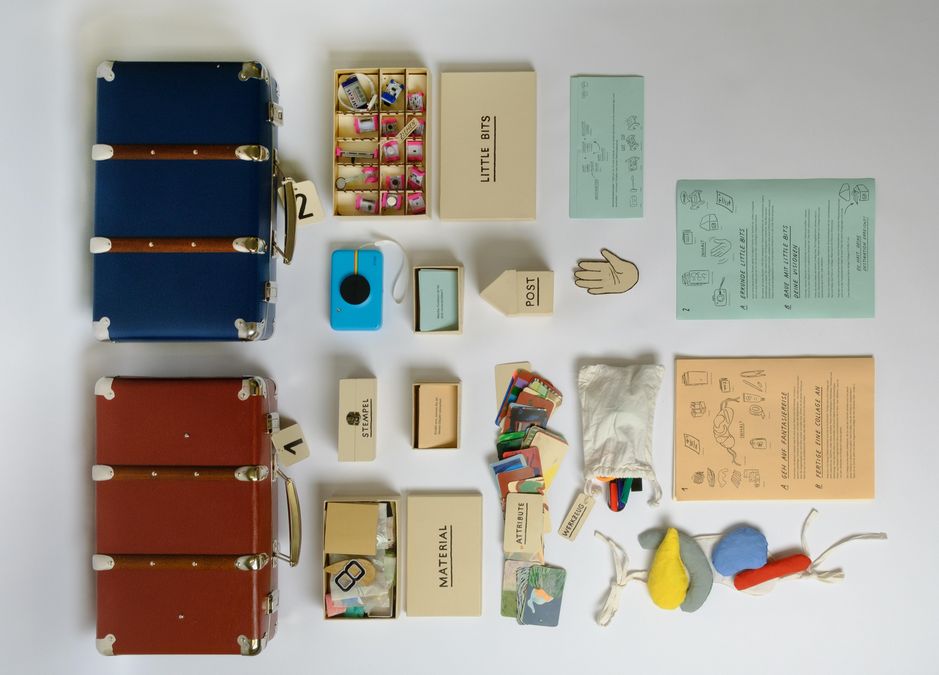With the handouts provided here, we would like to give interested parties the opportunity to utilise the co-design methods adapted in the futurehomestories project and tested in various contexts for their own purposes.
The methods adapted and tested in futurehomestories are freely available below for all interested parties. In addition, we offer documentation and instructions for further adaptations of the individual methods. In this way, we would like to make the tried and tested approaches available for further use in other research and design contexts.
Below you will find
- the method materials as a download
- manuals, which explain for each of the methods what it is based on and what it can do, what it consists of and how it works. The documentation also contains tips for further adaptations.
- references to the original methods on which the futurehomestories adaptations are based
Tiles IoT Inventor Toolkit was developed as a card-based co-design method. Our adaptation All tomorrow's homes enables people to playfully co-create stories about their homes of the future and their technologies. We started by exploring the original toolkit and creating an initial digital prototype. We kept the functional principle and most of the card categories and translated the material into German. We removed cards that did not relate to domestic technology and added those that thematised domestic life. We used the resulting prototype in online workshops. Building on this, we developed our card game-based adaptation with a canvas, adopting the card design but rearranging sections of the game and organising workshops in person. All tomorrow's homes is similar to the original, but focusses on storytelling. All materials can be downloaded in this section.
- Download Manual
- Download Canvas
- Download Cards 1
- Download Cards 2
- Download Cards 3
- More information about the Original Tiles IoT Inventor Toolkit
- Tiles Toolkit Website
- Mora, S., Gianni, F., & Divitini, M. (2017). Tiles: A Card-based Ideation Toolkit for the Internet of Things. Proceedings of the 2017 Conference on Designing Interactive Systems, 587–598. https://doi.org/10.1145/3064663.3064699
The IoT Service Kit was developed as a board game-based co-design method. With our adaptation This could be the future, participants can imagine, test and playfully explore scenarios for living with technologies in a speculative home of the future. We started by using the original, documenting and reflecting on our experiences. We retained the functional principle and most of the card categories and translated the material into German. We removed cards without reference to the home application field and added those that thematise domestic life. We introduced two new card categories: Actuators for output options, e.g. ‘fan’ or ‘light signal’ and Jokers for spontaneous game ideas. Instead of the prefabricated options, we developed the component of floor plan shapes, which participants can use to create the space - the home - they want to speculate about in a modular way. We designed new, customisable game tokens and added the character sheet, inspired by role-playing games. This gave creatures and things a place in the game. All materials can be downloaded in this section.
- Download Manual
- Download Workshop material
- More information on the Original IoT Service Kit can be found on the IoT Service Kit Website.
Cultural Probes were developed as a co-design method. This toolkit provides insights into the thoughts of participants who document their reactions to tasks using various materials sent in a package. Little Boxes is our adaptation of the Cultural Probes. Two suitcases filled with small tasks accompany the participants on an imagined journey into a home of the future, which takes on visual form by means of a designed collage of ideas. We want to collect stories about technologies in this speculative home. All materials can be downloaded in this section.
- Download Manual
- Download Material
- More information on the cultural probes approach
- Gaver, B., Dunne, T., & Pacenti, E. (1999). Design: Cultural probes. Interactions, 6(1), 21–29. https://doi.org/10.1145/291224.291235
- Gaver, W. W., Boucher, A., Pennington, S., & Walker, B. (2004). Cultural probes and the value of uncertainty. Interactions, 11(5), 53–56. https://doi.org/10.1145/1015530.1015555
Additional photos of the structure of the adaptation
Enormous creative energy is already being channelled into the development and creation of co-design methods. We in the futurehomestories project have also enjoyed working on and with the methods. It is therefore a pity that so far only a few co-creative approaches are accessible to a wide audience. To counter this, we would like to invite you to share feedback with us in addition to providing our own methods. For example, what was your motivation for trying out or adapting the methods, what did you use them for, what experiences and insights did you gain?
We would love to hear from you. Write to us at christian.pentzold@uni-leipzig.de
Together we can contribute to the stabilisation of co-design methods.
- In the futurehomestories project, we have always pursued a playful, explorative approach in our work. It was particularly important to us to focus on the experience and enjoyment of all participants in the workshops, which we conducted using the adapted co-design methods provided here. Opening up all possibilities for participants to contribute their creativity and making the participatory process accessible through multiple senses greatly enriched the project.
We would like to continue this with the names we have now chosen for the methods, which are based on music titles, and invite you to consider them as an introduction to exploring the methods.- Nico and the velvet underground - All tomorrow’s parties
- Talking heads – this must be the place
- Malvina Reynolds – Little Boxes


